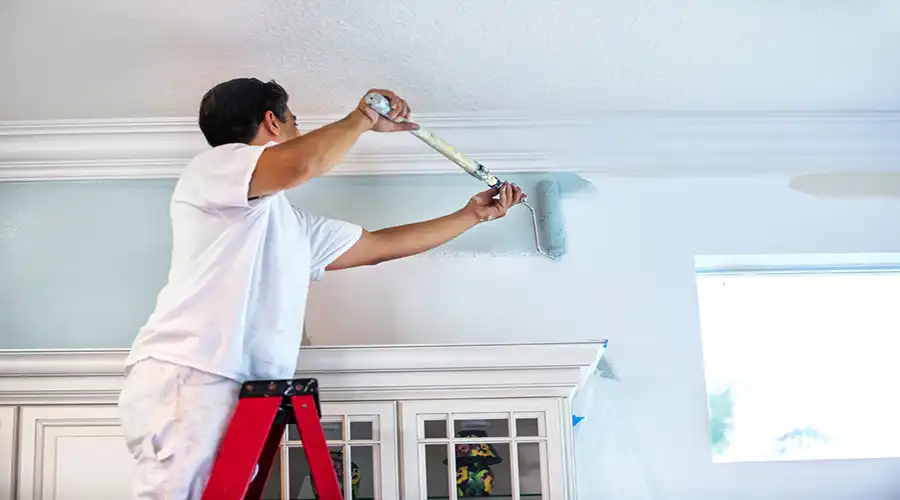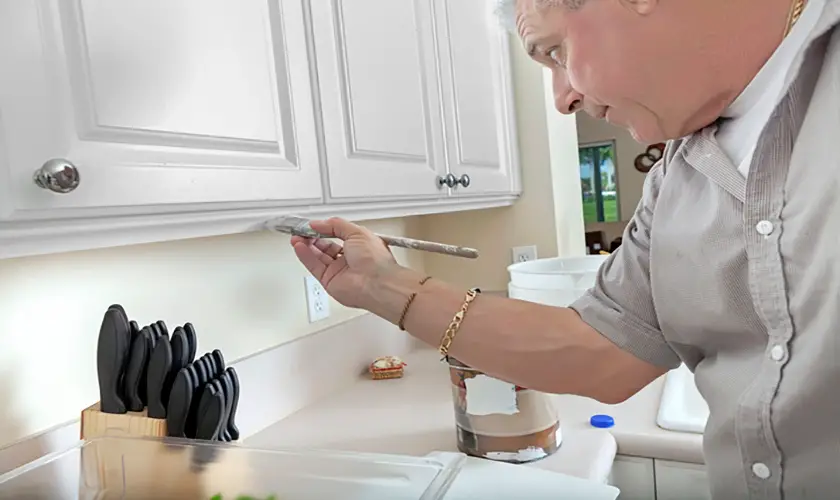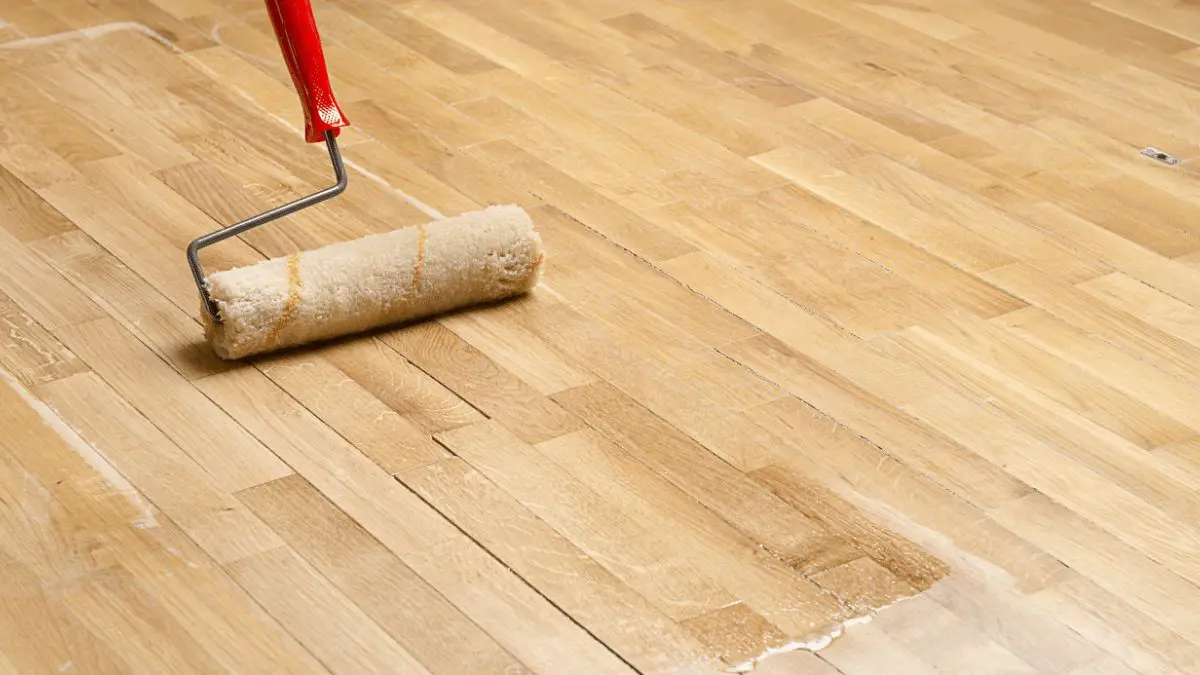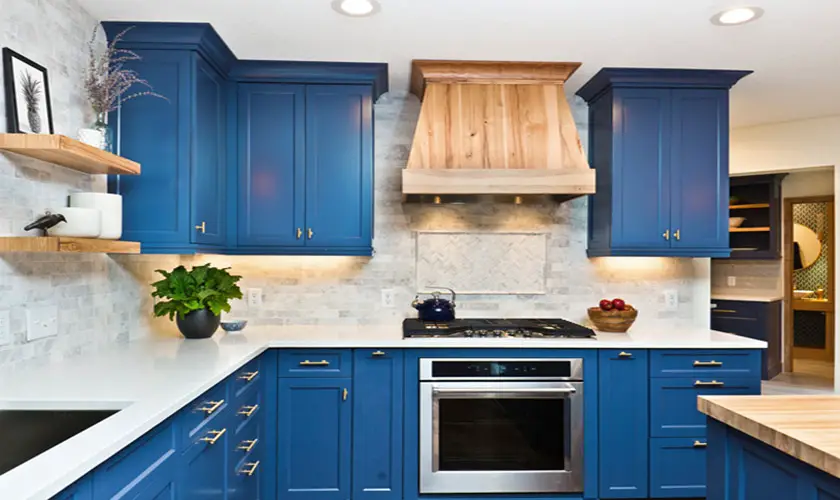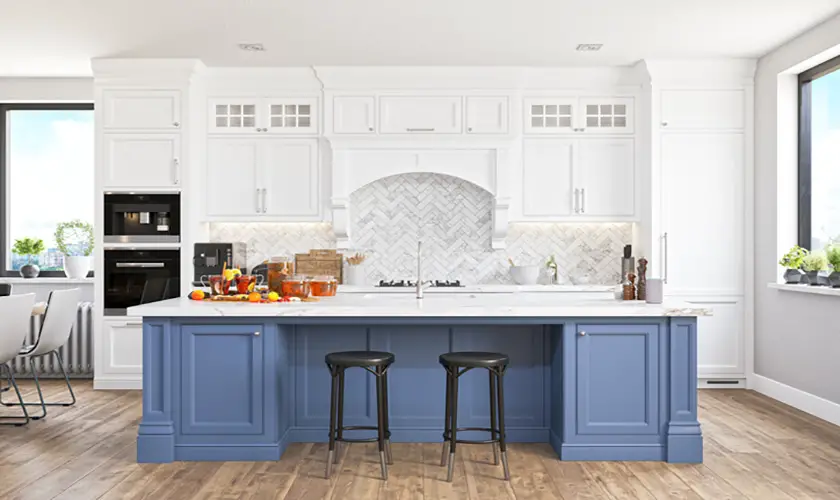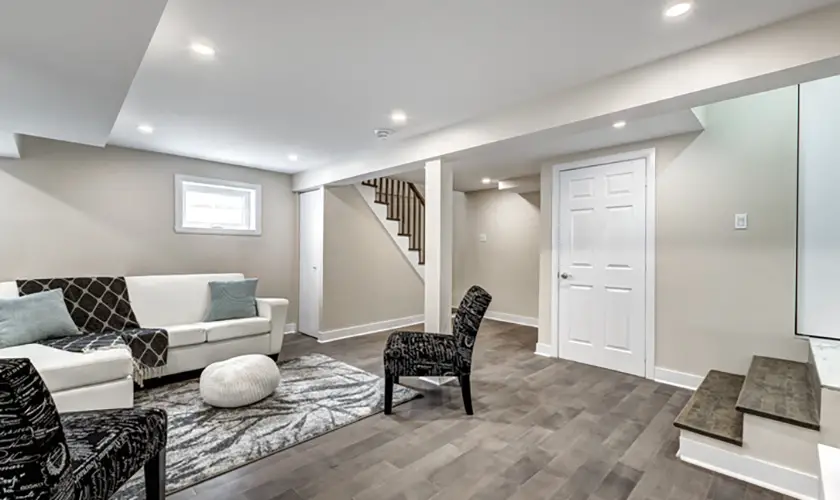When selecting a paint finish, you may wonder which is better – eggshell vs semi-gloss. But there are so many options! If you can’t choose between eggshell and semi-gloss paint, don’t worry. We’ll explain the main differences between the two finishes and help you figure out what to do.
The primary difference between eggshell vs semi-gloss paint is the binder to pigment ratio in the paint mixture. Eggshell has a lower ratio, reflecting less light and imperfections well. Semi-gloss has a higher ratio, meaning it reflects more light and is more durable.
Both eggshell and semi-gloss paint have their unique properties, but the main difference is how shiny they are. Eggshell has almost no shine, while semi-gloss is very shiny. But there are other things to consider too, like how long the paint will last and how well it covers up the old paint.
Eggshell and semi-gloss paint are easy to find. You can get either one in nearly any color. So how do you decide which one to use? Look at the other good and bad things about each type of paint. Here is some information to help you make your decision.
The primary main types of paint finishes for interior paints. Each of which has different sheens. The sheen is determined by the ratio of pigment to binder ratio of the paint. These include:
- Flat finish, often called matte finishes, has virtually no sheen.
- Eggshell finish has a soft sheen that reflects very little light.
- Satin finish also has a slight gloss higher than eggshell and will reflect more light.
- Semi-gloss finish has a high glossy finish.
We will focus here on eggshell ve semi-gloss. Let’s get started.
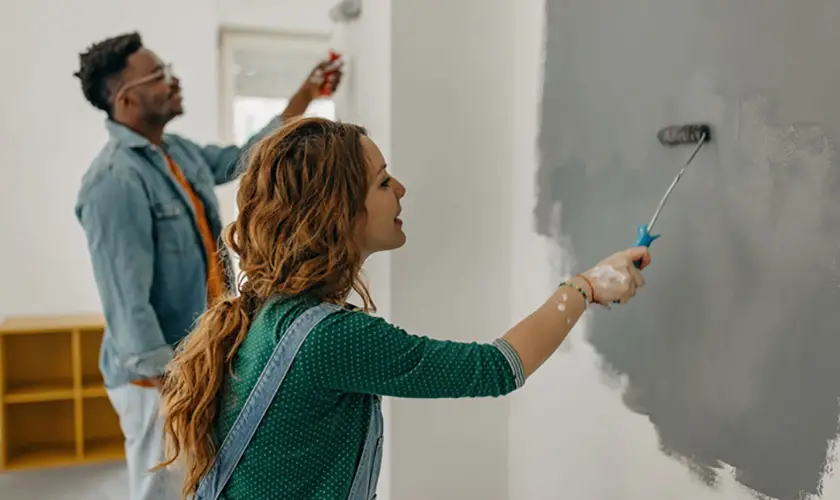
Eggshell vs. Semi-Gloss Paint Explained
Paint color is essential, but your paint finish can also make a big difference in your room’s appearance. Each paint finish has good and bad points you should consider before deciding.
Eggshell Finish
Eggshell paint is very low on the luster scale, which means it is not very shiny. It reflects a tiny amount of light, which gives the paint surface a soft glow. Usually, you can barely notice the sheen.
The paint sheen can make the color look more shiny and new. It makes the color appear more vibrant than flat paint (matte paint).
Eggshell finishes have a low sheen between flat and satin finishes. It has slightly more sheen than flat paint but less sheen than satin paint. It’s a soft sheen that doesn’t reflect much light. See our article on Eggshell vs Satin for more on that.
Eggshell finishes are the better choice when painting in low-traffic areas, such as walls or ceilings in a living room, hallway, bedroom, or any surface that is not touched often.
Manufacturers can produce an eggshell finish by changing the amount of binder in the paint. The lower sheen means there is less binder than in other types of paints, like satin, semi-gloss, and gloss.
The amount of paint binder in a product determines how tough and durable the sheen is. Eggshell has fewer binders, so it isn’t as strong as high-gloss paints but is more resistant than flat paints. Eggshell is harder to clean without causing damage, but it is more moisture-repellent than other finishes with fewer binders.
The decreased amount of binder in the paint gives it more pigment. You can get full coverage with fewer coats, even if you don’t use a one-coat paint. Also, the lower level of shine does a better job of hiding surface imperfections.
Generally, painting with eggshell paint is easier than using high gloss paint. The lower sheen makes it easier to spread the paint evenly, and touch-ups are less noticeable.
Eggshell paint is often quite affordable. The price for one can is usually lower than for other types of paint. You might also need fewer coats of eggshell paint, so you might not need to buy as many cans.
Considering hiring a painting contractor? Check out our house painting cost estimator to be sure you’re not overpaying for a professional painting contractor or to estimate the amount of paint to buy.
Semi-Gloss Finish
Semi-gloss paint has a higher gloss finish than an eggshell paint finish. The paint has a lot of binder in it. Binder is what makes the paint stick to surfaces. The binder also makes light bounce off the surface quickly. It makes the surface look like it is glowing.
Reflective paint is intense but can make small rooms without much natural light looks brighter. It can also highlight specific objects.
The semi-gloss paint finish is tough and durable because it has more binders. It resists wear and tear, and you can scrub the surface without damaging it. It is also moisture-resistant, making it ideal for areas of a home that are humid.
Applying semi-gloss paint can be difficult because paints with a lot of shine are more likely to show streaks, unevenness, and touch-ups. The paint’s reflectiveness makes wall imperfections more noticeable.
If you want your paint to have less pigment, you will need to use more binders. Opaque coverage might take several coats. One-coat paints can be helpful, but not all are the same. It depends on what color you try to cover with the semi-gloss paint.
Usually, paint with a shine costs more than paint that does not have a sheen. The price difference might seem small if you only buy one can of paint. But the price difference can increase if you buy several cans to cover a larger area.
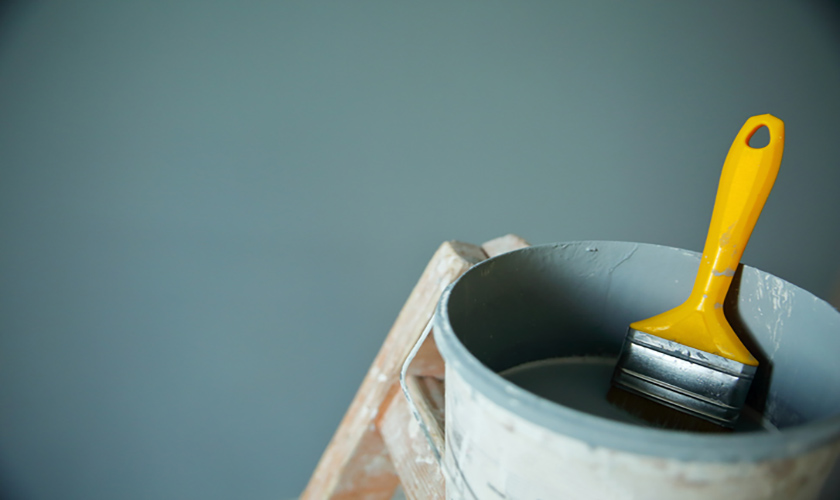
Eggshell vs Semi-Gloss: What’s the Difference?
Understanding the difference between eggshell vs semi-gloss paint is essential before deciding which one to use for your project. In this article, we will be taking a closer look at the differences between these two types of paint so that you can make a more informed decision.
Appearance and Light Reflection of Eggshell vs Semi-Gloss
The most significant difference between eggshell vs semi-gloss paint is the sheen level. Eggshell has very little luster, while semi-gloss is noticeably shiny.
The paint’s light-reflecting qualities affect the paint’s glow, and since semi-gloss is more reflective, the color is also affected by light bouncing off of surfaces. For example, when viewed in direct sunlight, the hue of a semi-gloss paint will appear lighter.
If light hits an object or surface before it reaches the semi-gloss paint, that color may change how it looks. The reflected light suggests the hue from the first object, making the semi-gloss paint look as if it has changed colors.
Eggshell paint does not reflect light as much as semi-gloss. The color appears more accurate in direct sunlight or when you can see reflections of nearby objects.
It’s important to remember that semi-gloss paint will make surface irregularities more visible. The light reflects off the blemishes, making them apparent. Since eggshell diffuses light less, it does better at hiding imperfections.
Semi-gloss paint has a shine to it that is very reflective. Eggshell paint has a gentle glow.
Even though they have different shininess levels, eggshell and semi-gloss paint can look smooth if applied correctly. However, avoiding streaks using semi-gloss paint is more challenging, leading to an inconsistent finish.
How Durable is Eggshell vs Semi-Gloss
Choosing between different types of paint can be tricky, but semi-gloss is usually more durable because it has a higher binding agent-to-water ratio. The surface is tougher, able to take more abuse, and better at repelling stains, dents, and dirt build-up. Plus, it does a great job resisting moisture damage.
Eggshell paint is more challenging to work with than flat paint and is less durable than semi-gloss. Eggshell is also more likely to get stained, dinged, or scratched. You have to be careful while cleaning it, so you don’t damage the paint. Eggshell is also not moisture-resistant.
The Coverage Area of Eggshell vs Semi-Gloss
Eggshell paint is better than semi-gloss because it has more pigment. It means you only need one coat to cover the surface completely.
There is less color when you use semi-gloss paint because more substance holds the color together. You can buy one-coat versions, but it might not work as well, depending on the color it needs to cover.
Although it is a little harder to work with, semi-gloss and eggshell paint have similar results. Eggshell paint will go on smoothly if the surface is dry, and any lines or streaks are less likely to be seen because it does not shine as much. The best way to apply eggshell paint is using a typical W method.
When attempting touch-ups, it is better to lower the sheen level with eggshell paint, making blending colors easier and less visible. High-sheen paints have a glossy surface that makes any inconsistencies stand out more.
The Maintenance of Eggshell vs Semi-Gloss
Eggshell and semi-gloss paint both have good and bad things about them. Eggshell is harder to clean, but it is easy to fix if you accidentally mark it. The fixed areas will not be as noticeable as they would be with other types of paint.
Semi-gloss paint is more likely to show touch-ups because the paint will reflect light differently in the touched-up area.
Eggshell vs Semi-Gloss Cost per Gallon
Eggshell paint is cheaper than semi-gloss paint. The price per can of eggshell paint is $4 to $6 less than semi-gloss paint from the same brand and line.
If you want to spend less money, compare the total cost of what you need instead of just the individual prices. For example, when painting a large area like a room or house, one can of paint not seem like it would cost very much. But choosing a more expensive paint brand that requires less labor could save hundreds of dollars.
| Paint | Semi-Gloss | Eggshell |
|---|---|---|
| Glidden Premium | $27.98 | $23.98 |
| Behr Premium Plus | $39.98 | $33.98 |
| Behr Marquee | $58.98 | $52.98 |
| Valspar Signature | $48.98 | $42.98 |
| HGTV HOME by Sherwin-Williams | $53.98 | $47.98 |
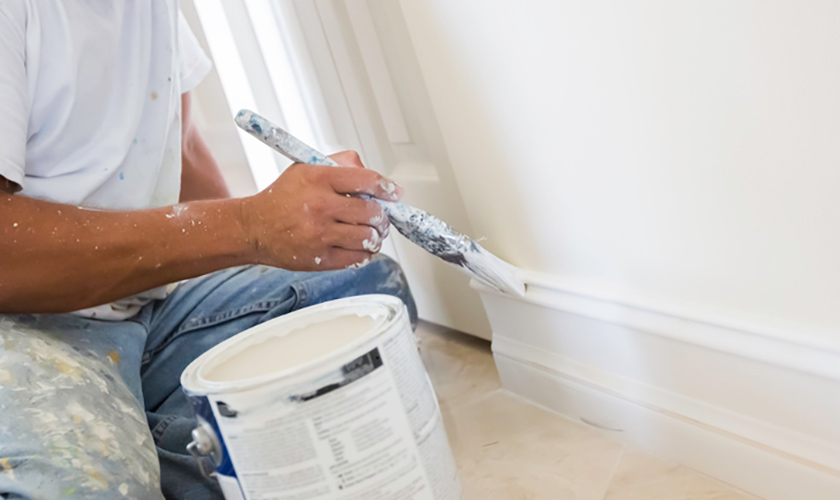
Eggshell vs Semi-Gloss: Where to Use?
Eggshell vs semi-gloss is better for some projects than others. Let’s look at each to see which is the right paint sheen for you.
Semi-Gloss Painting Projects
Semi-gloss is strong and does an excellent job of keeping moisture away, so it works well in laundry rooms, kitchens, and bathrooms. It’s also the best choice for high-traffic areas or on furniture, wood trim work, and cabinets that people often touch because it doesn’t show dirt and grime as much.
Adding semi-gloss paint to any room will make it seem brighter because light reflects easily off the surface. You can use semi-gloss in dim rooms to brighten them up or even in larger rooms that get a lot of light, though some people may find the sheen too harsh in an already illuminated space.
A better choice may be to use a satin paint finish on the interior walls and ceilings in children’s bedrooms, laundry rooms, kitchens, and bathrooms because it hides wall deficiencies better and is easier to clean. You can use higher sheen paints like semi-gloss on the cabinets, woodwork, and furniture.
Eggshell Painting Projects
Eggshell paint is good for areas of the house that do not get much traffic or contact. It is not as durable as other types of paint, but it has a slight shine without being too overbearing. Eggshell paint is a good choice for ceilings, dining rooms, bedrooms (great choice for teenage and adult bedrooms), home offices, and family rooms.
Eggshell paint is more delicate but could give a soft look in certain places like children’s bedrooms or hallways. Just remember that there might be more wear and tear because of increased traffic or contact.
Eggshell vs Semi-Gloss: Which is Better?
Ultimately, it depends on your project whether eggshell vs semi-gloss paint is better. Consider what you’re trying to achieve before making a decision.
We recommend eggshell paint for large areas where not many people go and there is no moisture. The lack of shine will make the room look more relaxed, and the color will look more accurate. Also, it’s simpler to apply, which decreases the likelihood of seeing streaks on big walls.
If you are worried about moisture, then semi-gloss paint is a good choice. It is more durable and easier to clean. Semi-gloss paint is also a good choice for surfaces people touch. Another good reason to use semi-gloss paint is that it makes rooms look brighter. It is especially true for rooms that do not get much natural light.
Choose high-quality paint for your paint project. A professional painter will often recommend Sherwin Williams or Benjamin Moore. Still, it’s a personal preference, and many high-quality paint brands like PPG, Porter, Valspar, Behr, and others are on the market.
Many low-quality paints don’t last long, and you’ll need to paint more frequently.
Eggshell vs Semi-Gloss Paint FAQs
We’ve covered a lot about eggshell vs semi-gloss finishes. Here are some additional frequently asked questions you may have.
Can You Mix Eggshell and Semi-Gloss Paint?
If you mix eggshell paint and semi-gloss paint, you end up with a finish similar to satin. If you don’t mix different paint finishes thoroughly, your project will be streaky and have different levels of shine, creating an uneven finish. A mechanical mixer is best if you mix eggshell and semi-gloss paint.
Is eggshell or semi-gloss better for walls?
We recommend using eggshell paint on interior walls and ceilings and semi-gloss paint on wood trim, doors, cabinets, and furniture.
What is easier to clean, semi-gloss or eggshell?
Semi-gloss paint is the best choice for wood trim, doors, cabinets, and furniture pieces because it’s durable and easier to clean. Eggshell is not as easy to clean and is better for walls and ceilings in low-traffic areas.
Get FREE quotes from the best local painters in your area today. Whether you need a whole house painted or just a bedroom, we can help with all your interior or exterior painting needs!
Conclusion
In conclusion, when considering eggshell vs semi-gloss when painting your home’s interior. Eggshell paint finishes best suit walls and ceilings, while semi-gloss works well on doors, windows, trim, and cabinetry.
Ultimately it comes down to the look you are trying to achieve, as both finishes have advantages and disadvantages. Be sure to consider your options before deciding on the right paint finish.


